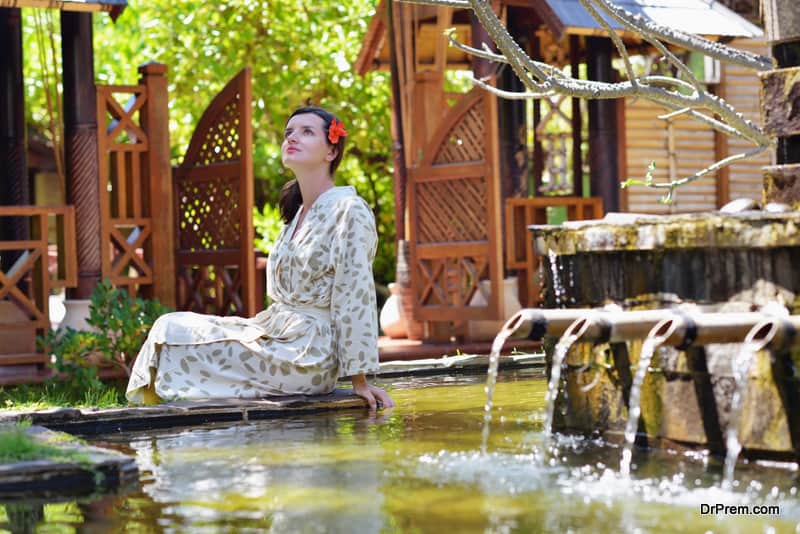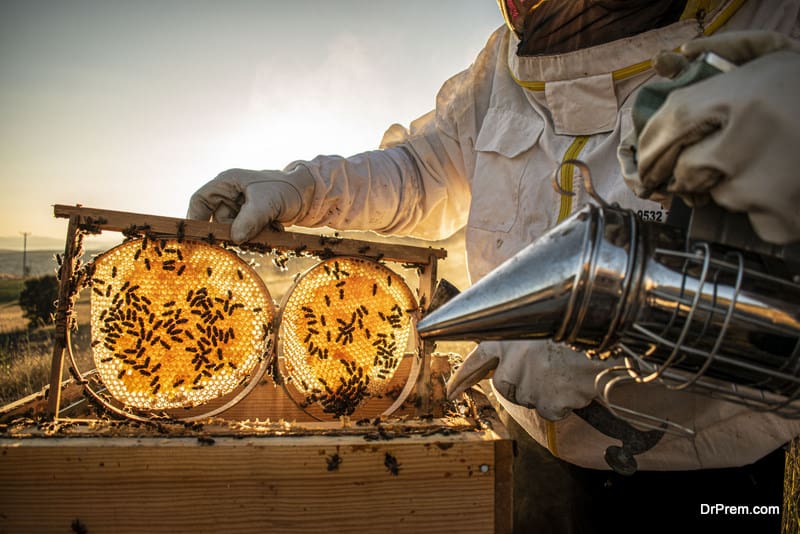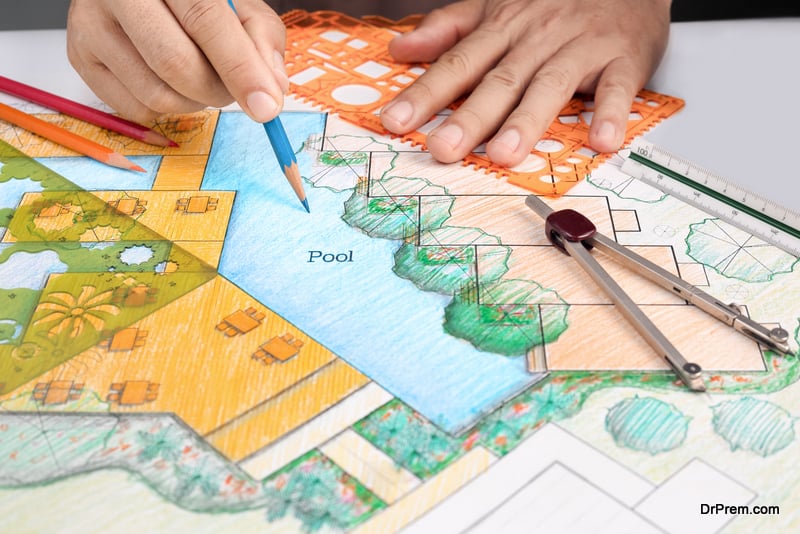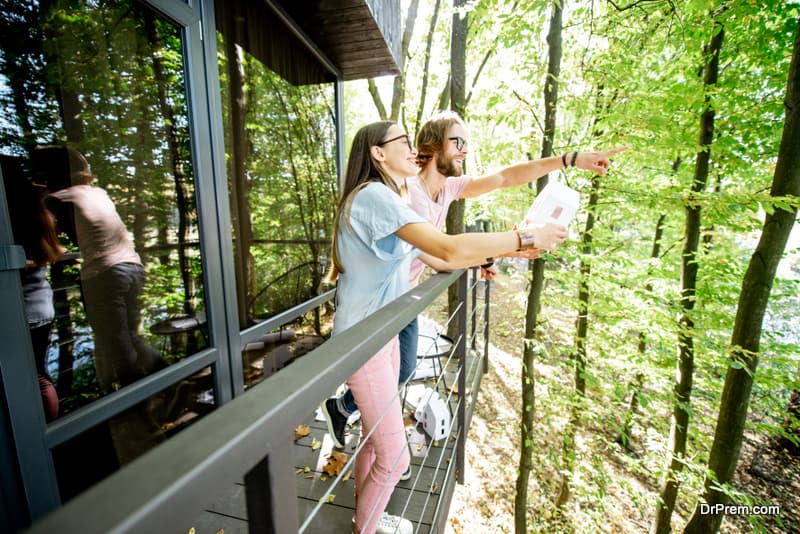Biophilic design in wellness resorts is directly linked with the guests’ intent who always look for relaxing and rejuvenating escapes to soothe their stressed minds and body. The design supports wellness resorts in creating healing and restorative spaces where guests feel refreshed and revitalized ready to take on the world with heightened zeal.
Biophilic means love for living things. Human beings are deeply in love with nature throughout different evolutionary phases. Biophilic design is purposed to reset the human-nature interaction that is lost in the urban concrete jungles.
The vacationing intent of individuals is evolving. Travelers are keen on healthy and pleasant sensory engagements to promote their well-being. Biophilic design in wellness resorts plays a great role in fulfilling this objective.
In this wellness guide, we explore the exciting domain of biophilic design and its useful application in wellness resorts.
Guide on Biophilic Design in Wellness Resort by Dr Prem Jagyasi- Concept, Philosophy, Key Features, Experiences, Design Approach, and Challenges
-
What is Biophilic design?
-
Why and how Biophilic design has evolved?
-
What are the key features of Biophilic design in wellness resorts?
-
What do you mean by nature-human interaction in biophilic design?
-
Understanding the Direct and indirect experiences with nature in biophilic design
-
Why Biophilic design in a wellness resort? What is its impact?
-
What should be the design approach for biophilic design in Wellness Resort?
-
What are the challenges in biophilic design in a wellness resort?
-
What does not make a biophilic design in a wellness resort?
What is Biophilic design?

Man is a social animal whose security, well-being, and productivity depend largely on spatial interactions whether at home, workplace or leisure spaces. The biophilic design also means fostering connections among individuals and the environment with enhanced relationships and a feeling of belongingness.
Why and how Biophilic design has evolved?

Research shows, 120 minutes of weekly exposure to nature enhances health and well-being. And this finding has made a significant impact on people’s lifestyles who are now considering bringing outdoor nature indoors leading to the evolution of biophilic design. Time spent in natural surroundings is £4.5 trillion worth a year regarding improvement in mental health alone as per a peer-reviewed study published in Nature Communications that involved 20,000 people.
Not only homeowners but globally leading corporates are setting up their headquarters and campuses in vast countryside or city outskirts with ample access to nature. Studies have shown, workers in workplaces with ample greenery, sunlight, and air showed a 6% increase in productivity, reported a 15% enhancement in well-being, and are 15% more creative.
Nature-inspired wellness resorts and hotels regardless of their location in urban or natural settings are more focused on biophilic design elements to enable guests the consistent and repetitive engagement with nature.
Biophilic design in wellness resorts is more conspicuous that facilitates the holistic well-being of guests syncing wellness programs and therapies with nature. Most of the popular wellness resorts in the world enjoy a big advantage of their natural settings. But to what extent can they tap the potential of biophilic design for enhanced guest wellness experience depends on their vision and outlook.
What are the key elements of Biophilic design in wellness resorts?
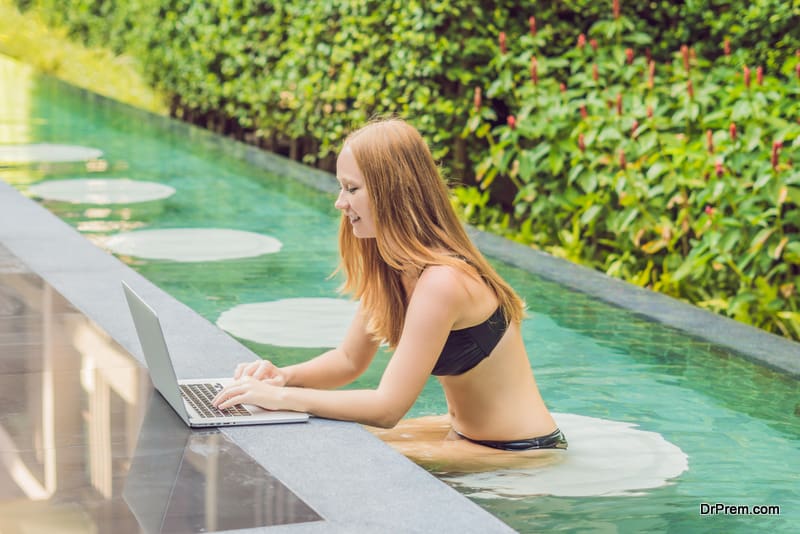
- Non-disruptive – Unrestricted view of nature
- Natural auditory elements – Chirping of birds, flowing water, swaying of branches
- Natural olfactory factors – fragrant blooms, the aroma of the foliage
- Pleasant sensory stimuli- Birds flying, flowing water, fleeting clouds
- Aesthetic Landscaping – lush pastures, decorated gardens
- Variations in temperature and airflow – Fresh breeze, mellow sunrays
- Natural daylight – Sunlit rooms
- Biomorphic patterns and shapes – Conches, leaf motifs, shells
- Natural modifications – rock formations, pebbles, designed tree branches
- Spatial Orientation – positioning of rooms, walking spaces, lounges, and other shared spaces
- Location-based cultural and ecological elements – traditional art and artifacts
- Provisions for healthy relationships and communication
What do you mean by nature-human interaction in biophilic design?

Human beings nurture a deep emotional connection with nature devoid of which is detrimental to well-being. This explains the deep relationship between biophilia and mental well-being and why modern built environments are seriously considering biophilic design.
Mere sporadic placements of natural elements do not justify the biophilic concept simply because it does not facilitate interaction. Biophilic design should allow the user unlimited interaction with nature that may often blur indoor-outdoor boundaries.
If you have an unrestricted view of green nature and bright daylight from indoors, it sets your interaction with nature. The feel of fresh breeze, the warmth of the daylight, the chirping of the birds, and the blooming of flowers and their fragrance every element of nature contributes to nature-human interaction. We interact with them directly or indirectly.
In a wellness resort, outdoor mind-body programs are mostly held in open spaces under the sky. The aim is to foster interaction with nature to achieve the desired mind-body harmony. Wellness resorts in urban settings with limited exposure to nature and greenery can integrate elements that mimic nature, which is also known as biomimicry.
Understanding the Direct and indirect experiences with nature in biophilic design
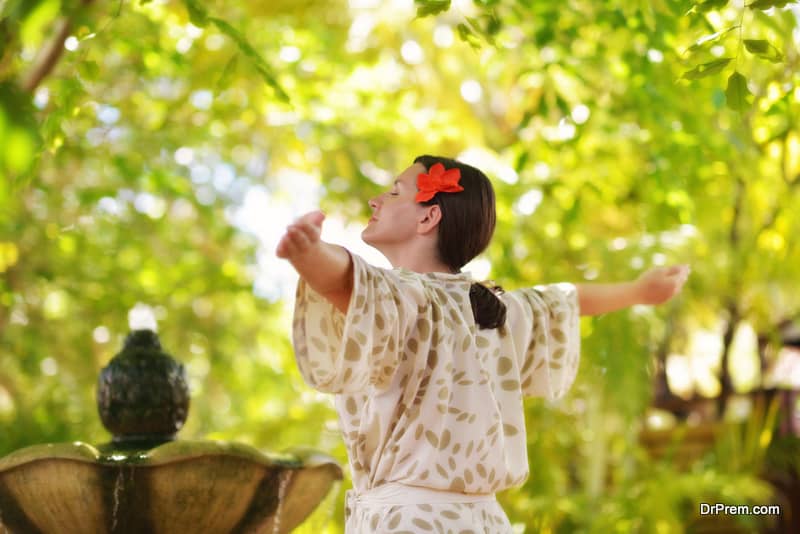
Direct experience with nature could be a visual connection with nature through windows and doors. It can also mean being physically present in nature as in gardens, landscapes, green walkways, treks, trails, water bodies, and also the presence of animals. Direct experience encompasses the entire auditory, haptic, olfactory, or gustatory connections with nature through various experiences.
The smell of fresh green foliage or the wet soil after a downpour makes you feel great. You feel exhilarated when you dip your feet in the flowing stream. A dip in the pool leaves you refreshed. You relish a particular dish unique to that location. Countless such direct experiences with nature are integral in biophilic design in wellness resorts, hotels, or spas.
Indirect experience with nature involves audio-visual interactions with various biomorphic shapes and patterns, colors, textures, and materials, and simulated light and air. For example, pictures of nature, waterfalls, oceans, forests, mountains, etc. contribute to indirect interaction with nature. Earthy materials, conch shells, rock formations, natural fiber, and fabrics are also a part of the indirect experience with nature.
In biophilic wellness resorts, you will come across plenty of such direct and indirect experiences with nature that make your stay so awesome in all respects.
Why Biophilic design in wellness resorts?
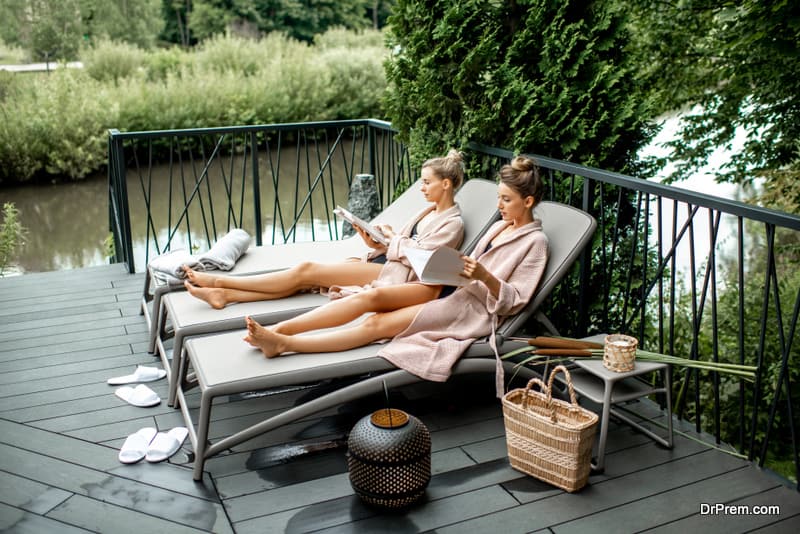
- In a 2021 survey, 47% of respondents report mental health and wellness are top motivators for vacationing.
- According to a survey by Wellness Tourism Association, access to quiet spaces and outdoor nature is a ‘must have’ for vacationers.
- Neo-nomadic workforce is creating newer modes of vacation where nature-filled destinations are the top priority.
This demand shift has underscored the importance of biophilic design in holiday accommodations. People want to feel better and energized while putting up in a resort or hotel, and biophilic elements enhance this inherent desire.
Biophilic design in wellness resorts should be considered for two prime reasons. Firstly, growing evidence shows biophilic elements have real measurable benefits on human well-being regarding stress reduction, productivity, emotional upliftment, restoration, and healing.
According to experts, interaction with nature is linked to better cognitive functioning on tasks needing memory and concentration. Amid the growing global workplace burnout incidences, the positive impact of biophilic design is pronounced.
- The University of Chicago in a study found green offices result in a 6% decrease in employee stress levels.
- Another study from the University of Washington showed that improved access to natural views from the workplace resulted in a 13% decrease in burnout symptoms.
Secondly, from the environmental standpoint, biophilic design helps to appreciate nature leading to increased efforts in the preservation of nature reinforcing its sustainability. Biophilic design by default enhances the guests’ appreciation of nature and the value of harmonizing self with the surroundings in the journey to holistic wellness.
How does biophilic design in wellness resorts create a positive impact on guests?

To overcome this, people need to go through 4 distinct phases: fascination, directed attention to the fascinating environment (what makes it so fascinating?), mindful observation, and immersive restoration.
These phases do not surface naturally but through careful and sustained efforts to nudge people’s attention toward those fascinating elements. Studies have shown biophilic design helps in calming and stimulating the mind enabling people to enhance their performance. This type of design allows your mind to relax and refocus periodically without allowing fatigue to set in.
Biophilic wellness resorts are great havens for relaxation and restoration and pose one of the biggest attractions in wellness tourism. Guests enjoy the immersive restoration programs that are further complemented by biophilic design. Whether it is for a digital detox, workcation, or wellness sabbatical, biophilia in wellness resorts creates the perfect ambiance.
What should be the design approach for biophilic design in Wellness Resort?
Integrating biophilic elements into a wellness resort demands a unique approach detailed as follows:
Do a feasibility study of the proposed wellness resort site using a drone

Mark the land contours and identify the best viewpoints of the resort premises
Specific viewpoints that allow maximum visibility and interaction with nature are the biggest plus point of a wellness resort. Splendid viewpoints leave guests fascinated. Before laying the plan, it is important to identify those viewpoints to create the best immersive experiences for guests.
Study the girth and age of the surrounding greenery to develop a conservation plan
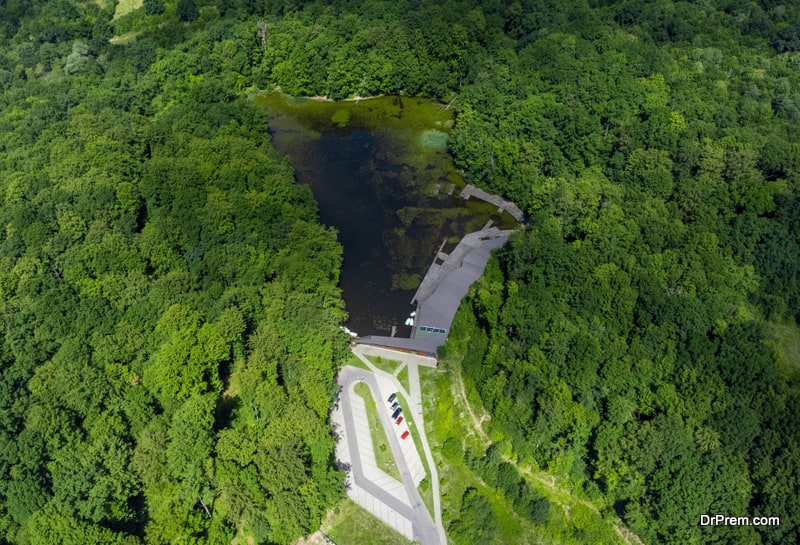
Keeping a note of the girth and age of the trees. Tall trees and thick woods add a lot of value to the resort experience. You can run afforestation programs to create new greenery that will replace the old trees as they wither in due course of time.
Study the seasonal aspect of the foliage and greenery
Is the greenery around your wellness resort seasonal or remains same all the year round? Study the noticeable changes in the foliage color especially during the fall season or winter to orient the interiors accordingly. You can allocate special spaces and resources to cultivate specific plants and foliage resilient to seasonal changes.
Take steps to preserve the ecosystem thriving in the existing greenery umbrella
Green nature cannot thrive without the support of living organisms. While you put efforts to preserve trees and plants, care should also be taken to support the lives of birds, animals, insects, and other microorganisms that depend on this greenery for their sustenance.
Apiculture, floriculture, organic gardening, and other small-scale farming activities help in preserving the ecosystem for sustainable biophilic design in wellness resorts. Your guests have better access to interact with nature directly and indirectly.
Maximize natural light and air through diurnal motion orientation
A key component of biophilic design is harnessing natural light and air to enhance the indoor environment. The positioning of rooms, open spaces, and other interior areas should depend on the diurnal motion of the earth to facilitate a calming and relaxing environment for guests. This would be a truly transformative space in wellness resorts that will reduce stress and promote overall well-being.
Design water bodies or aqua streams in sync with the existing landscape

Make sure to take every step to preserve nature
Wellness resorts with rich natural reserves are crowd-pullers. While this may give you a competitive edge, inadequate efforts to preserve nature can ruin the biophilic ambiance. Forge partnerships with professional conservationists to prevent the degradation of nature.
Create provisions for unrestricted panoramic views
The restricted outdoor view is against the biophilic concept. Rooms, villas, and cottages must be carefully orientated to provide guests with uninterrupted panoramic views of their natural surroundings. This way, guests can immerse themselves in the beauty of nature and experience its calming and rejuvenating effects. In urban wellness resorts, biophilic design can be further elevated by incorporating specially designed elements and features that mimic the look, feel, and sounds of nature, creating a truly immersive experience for guests.
Carve trekking and hiking trails for incredible experiences
Hiking and trekking are the most sought-after activities in wellness resorts for their immense health and wellness benefits. Carved trekking, hiking, and walking trails allow immersive human-nature interaction. Guests are filled with ‘awe’ as they set out for hiking and trekking.
Invest in the best of skills, expertise, and experience for topography-optimized plans
Hire designers and architects with deep knowledge of biophilic design concepts and implementation. Experienced wellness resort and hotel consultants have biophilic experts on board who can help you with the best guidance to ensure your ROI.
Create the 3D format of the massing of the built structure in the context of the topography

Apply advanced GIS and BIM to make the built forms fit into the site contours.
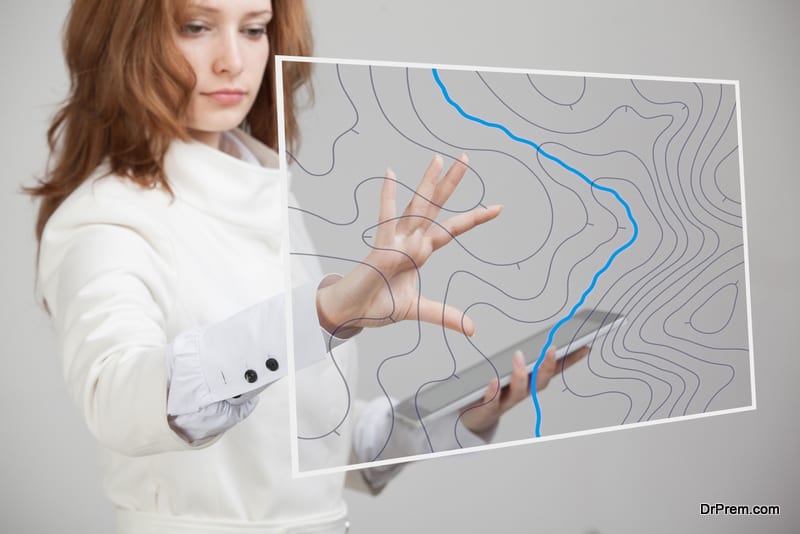
BIM stands out from traditional 3D models in the fact that you can feed abundant information in it related to design, materials, and landscape. It will generate a massive predictive analysis for every object planned in the wellness resort helping you anticipate costs, planning, and maintenance.
What are the challenges in biophilic design in a wellness resort?

- Lack of understanding of human inclination toward nature. Too much of profiteering motive can spoil the biophilic design opportunities. You need to respect the human-nature connection to make your wellness resort business thrive.
- Lack of experts to create the right biophilic ambiance. It is not anybody’s job. Neither it is easy to find biophilic design experts.
- Expensive maintenance. Biophilic materials are likely to wear out faster making them unsustainable in the long run.
- Chances of impaired accessibility for disabled persons or those with restricted mobility. Green-manicured lawns and gardens may pose difficulties for guests on wheelchairs.
- Seasonal allergies arising from pollens may catch guests unaware and land them into serious health problems.
- Balancing the existing ecosystem with the built environment. Any construction is likely to have a detrimental impact on the surroundings. Felling trees to make room for villas and cottages are common and not beneficial for the environment.
- Thick greenery can create unhealthy damp and moist conditions if not taken care of properly. Wellness resorts in tropical countries are more likely to face such situations due to persistent humid and damp weather.
What does not make a biophilic design in a wellness resort?
Biophilic design in wellness resorts means setting up a dialogue between guests and nature that mainly include direct and indirect stimuli to various natural processes. It is like the feeling of awe at the sight of crashing sea waves, the mighty snowcapped peak, or glistening dewdrops on the green foliage.
The tragedy with biophilic design happens in the following instances:
- Biophilia is not only about greenery. The scattered placement of greenery does not justify the concept. One has to take a holistic view and incorporate different elements of nature.
- Exposure to irrelevant and out-of-context shapes and features with very little impact on guests’ perception and appreciation.
- Exposure to nature in a disconnected space.
- Unnecessary complexity in space design.
- Too many aesthetics undermining natural and earthy essence.
- Placing artificial lights to compensate for the obstructed natural light.
- Ignoring the local cultural essence in interior décor.
- Improper orientation of doors and windows restricting the natural energy flow.
- Disrespecting the natural ecosystem. Cutting down too many trees to accommodate more cottages and villas.
- Ignoring the importance of emotion.
- Lack of space to foster sustained and positive interactions irrespective of the greenery and waterfront views.
Wellness resorts and destinations are largely nature-inspired. Biophilic design can create wonders in elevating the guest experience.


